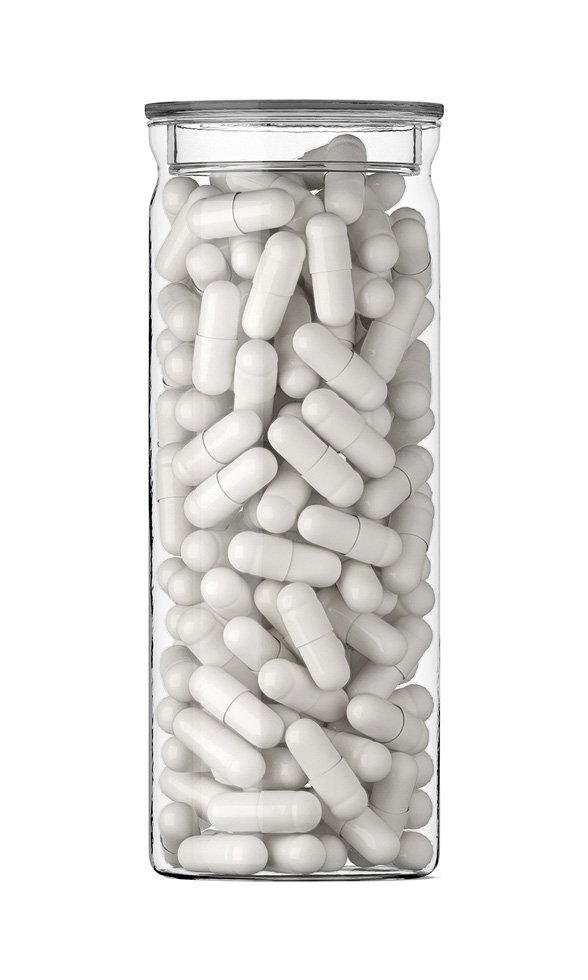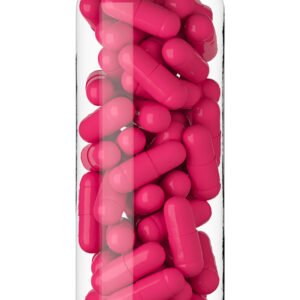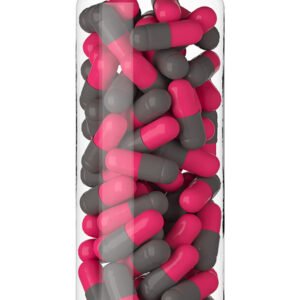Possible interactions include: amiodarone; antacids; anti-thyroid medicines;calcium supplements; carbamazepine; cholestyramine; colestipol; digoxin; female hormones, including contraceptive or birth control pills; iron supplements; ketamine; liquid nutrition products like Ensure; medicines for colds and breathing difficulties; medicines for diabetes; medicines for mental depression; medicines or herbals used to decrease weight or appetite; phenobarbital or other barbiturate medications; phenytoin; prednisone or other corticosteroids; rifabutin; rifampin; soy isoflavones;sucralfate; theophylline; warfarin.
NOTE: Many drugs affect thyroid hormone pharmacokinetics, metabolism or in vivo pharmacodynamics; such drugs may alter the therapeutic response to thyroid hormone replacement. The following medication list is not complete, consult specialized resources for drug-thyroidal axis interactions that may occur.
Antithyroid agents should not be administered with the thyroid hormones due to their opposing effects. However, iodide and drugs that contain pharmacological amounts of iodine including radiopaque contrast agents that contain iodine (e.g., iohexol, ioversol, iopamidol, and iodixanol) may cause either hypothyroidism or hyperthyroidism in previously euthyroid patients. Patients receiving liothyronine and drugs that contain iodine should be monitored for changes in thyroid function.
Certain foods, beverages, and enteral feedings can inhibit the absorption of thyroid hormones. To minimize the risk of an interaction, thyroid hormones should be administered on an empty stomach with a glass of water at least 30—60 minutes prior to food or enteral feedings. Foods that may decrease thyroid hormone absorption include soybean flour and soy-based infant formulas or enteral feedings, as well as high fiber diets, cottonseed meal, and walnuts. In addition to decreasing the oral absorption of thyroid hormones, limited data indicate that soy containing foods and supplements may also influence thyroid physiology. Concentrated soy isoflavones (e.g., genistein and daidzein) may interfere with thyroid peroxidase catalyzed iodination of thyroglobulin, resulting in a decreased production of thyroid hormones and an increased secretion of TSH endogenously. More studies are required to assess the exact mechanism of this interaction. Caution should be used in administering soy isoflavone supplements concurrently with thyroid hormones. Limited data show that coffee has the potential to impair T4 intestinal absorption. In one report, T4 intestinal absorption was evaluated after the administration of 200 mcg L-thyroxine (L-T4) swallowed with coffee/espresso, water, or water followed 60 minutes later by coffee/espresso. Researchers found that administration with coffee/espresso significantly lowered average serum T4 (p<0.001) and peak serum T4 concentrations (p<0.05) when compared to L-T4 taken with water alone. Coffee/espresso taken 60 minutes after L-T4 ingestion had no significant effect on T4 intestinal absorption. It is prudent to remind patients that thyroid hormones should be separated from food and beverages (other than water), including coffee, by at least 30—60 minutes.
Oral aluminum hydroxide, magnesium salts, calcium salts, calcium carbonate, and antacids, containing any of these electrolyte salts have been reported to chelate oral levothyroxine within the GI tract when administered simultaneously, leading to decreased absorption. Some case reports have described clinical hypothyroidism resulting from coadministration of levothyroxine with oral calcium supplements and aluminum hydroxide. This interaction may also occur with liothyronine. To be prudent and to minimize this interaction, administer liothyronine at least 4 hours before or after antacids or other drugs containing aluminum, magnesium, or calcium.
Simethicone has been reported to chelate oral levothyroxine within the GI tract when administered simultaneously, leading to decreased thyroid hormone absorption. To minimize the risk of interaction, it may be prudent to administer oral liothyronine at least 4 hours before or after the ingestion of simethicone.
Polysaccharide-iron complex and other oral iron salts have been reported to chelate oral thyroid hormones within the GI tract when administered simultaneously, leading to decreased thyroid hormone absorption. Some case reports have described clinical hypothyroidism resulting from coadministration of thyroid hormones with oral iron supplements. To minimize the risk of interaction, oral thyroid hormones should be administered at least 4 hours before or after the ingestion of iron supplements.
Cholestyramine can bind T3 and T4 in the gastrointestinal tract, impairing absorption of both hormones. Colestipol may have similar effects on absorption. Other cholesterol-lowering agents might also interfere with thyroid absorption. At least 4—6 hours should be allowed between the administration of thyroid hormones and either cholestyramine or colestipol.
Administration of thyroid hormones with sucralfate may result in a decreased bioavailability of liothyronine. The exact mechanism of this interaction is not known, but the agents should be separated in administration.
Cation exchange resins like sodium polystyrene sulfonate (i.e., Kayexalate), can bind thyroid hormones in the GI tract and inhibit thyroid hormone absorption. Administer liothyronine at least 4 hours apart from cation exchange resins.
The pharmacodynamics of the effects of thyroid agents in the diabetic patient are poorly understood. Close monitoring of blood glucose is necessary for individuals who use insulin or oral hypoglycemics whenever there is a change in thyroid treatment therapy. It may be necessary to adjust the dose of antidiabetic agents if liothyronine is added or discontinued.
Ketamine should be administered cautiously to patients receiving thyroid hormone therapy. Concomitant use can cause marked hypertension and tachycardia.
The administration of estrogen can increase circulating concentrations of serum thyroxine-binding globulin (TBg). Increased amounts of TBg reduce the clinical response to thyroid agents. Patients on thyroid replacement therapy may require larger doses of liothyronine if estrogens or estrogen-containing oral contraceptives are added to the drug regimen. Changes in TBg concentration should be taken into consideration when reviewing T4 and T3 laboratory values. Unbound (free) T3 should be measured, rather than total T3 (TT3).
Due to the increased adrenergic effect of catecholamines caused by thyroid hormones, use of vasopressors may increase the risk of precipitating coronary insufficiency. Use caution when administering vasopressors with liothyronine.
Concomitant use of sympathomimetics and thyroid hormones can enhance the effects of either drug on the cardiovascular system. Patients with coronary artery disease have an increased risk of coronary insufficiency from either agent. Combined use of these agents may further increase this risk.
Drugs that possess hepatic enzyme-inducing properties can increase the catabolism of levothyroxine and, thus, should be used cautiously with liothyronine. These include barbiturates, carbamazepine, hydantoins (i.e., fosphenytoin, phenytoin, or ethotoin), and rifamycins (e.g., rifabutin or rifampin). Clinicians should be alert for a decreased response to thyroid hormones if any of these agents are used during thyroid hormone therapy.
The effects of indandione- or coumarin-derivative anticoagulants can be altered when thyroid agents are administered concomitantly. It has been shown that by accelerating the metabolic degradation of vitamin K-dependent clotting factors, hyperthyroidism augments the response to warfarin. It is possible that exogenously administered thyroid hormone also can augment the response to warfarin or dicumarol. INRs should be monitored carefully in patients receiving warfarin and liothyronine concomitantly and the dose of the anticoagulant should be adjusted as needed.
The metabolism of corticosteroids and corticotropin (ACTH) are increased in patients with hyperthyroidism and decreased in patients with hypothyroidism. Therefore, caution should be taken when initiating, changing or discontinuing thyroid agents. Additionally, a decrease in thyroid binding globulin (TBg) concentrations have been observed following corticosteroid therapy and should be taken into consideration in the interpretation of T 4 and T 3 values, which guide thyroid treatment.
Amiodarone has a complex effect on the metabolism of thyroid hormones and can alter thyroid function tests in many patients. Since approximately 37% of amiodarone (by weight) is iodine, maintenance doses of 200—600 mg of amiodarone/day result in ingestion of 75—225 mg/day of organic iodide, resulting in much higher total iodine stores in the body. In addition, amiodarone decreases T4 5′-deiodinase activity, which decreases the peripheral conversion of T4 to T3, leading to decreased serum T3. Serum T4 levels are usually normal but may be slightly increased. TSH concentrations usually increase during amiodarone therapy, but after 3 months of continuous administration, TSH concentrations often return to normal. However, amiodarone can cause hypothyroidism or hyperthyroidism, including life-threatening thyrotoxicosis. Therefore, patients receiving liothyronine and amiodarone should be monitored for changes in thyroid function; because of the slow elimination of amiodarone and its metabolites, abnormal thyroid function tests may persists for weeks or months after amiodarone drug discontinuation.
Decreased digoxin clearance occurs with hypothyroidism; when corrected with thyroid hormone, clearance returns to normal. Hypothyroid patients may have an increased risk for digitalis toxicity. When thyroid hormone therapy is added, however, an increase in the digoxin dose may be necessary.
Thyroid hormones may increase receptor sensitivity and enhance the effects of tricyclic antidepressants and related drugs (e.g., amoxapine, maprotiline. Older literature describes a variety of responses when tricyclic antidepressants are used concomitantly with thyroid hormones. Thyroid hormones may accelerate the onset of action of tricyclic antidepressants; however, several case reports have described cardiovascular toxicity as a result of this drug combination; other reports describe no interaction. Although this drug combination appears to be safe, clinicians should be aware of the remote possibility of exaggerated cardiovascular side effects such as arrhythmias and CNS stimulation.
Correction of hypothyroidism to the euthyroid state may precipitate certain drug interactions. For example, hypothyroidism causes decreased clearance of theophylline, which returns to normal in the euthyroid state. Theophylline dosage adjustments may be needed with thyroid hormone replacement.
Because thyroid hormones cause cardiac stimulation including increased heart rate and increased contractility, the effects of beta-blockers may be reduced by thyroid hormones. The reduction of effects may be especially evident when a patient goes from a hypothyroid to a euthyroid state or when excessive amounts of thyroid hormone are given to the patient. In addition, because liothyronine (T3) has more pronounced cardiovascular side effects when compared to levothyroxine (T4), the effects on beta-blockers may be more common in patients treated with liothyronine.
Thyroid hormones are susceptible to drug interactions with buffers/antacids containing aluminum or calcium, which may chelate thyroid hormones within the GI tract and decrease oral thyroid hormone absorption. Certain didanosine, ddI formulations contain buffers (e.g., chewable/dispersible tablets and oral powder for solution) or are mixed with antacids (e.g., pediatric oral powder for solution). Thyroid hormones should be administered at least 2 hours before the administration of these ddI formulations to avoid an interaction. The delayed-release didanosine capsules (e.g., Videx® EC) do not contain a buffering agent and would not be expected to interact with thyroid hormones.
Closely monitor the thyroid status of any patient taking thyroid hormones concurrently with indinavir. Hyperthyroidism was reported in a patient when indinavir was added to a stable levothyroxine dosing regimen. Indinavir inhibits UDP-glucuronosyl transferase, which may have decreased the metabolism of the thyroid hormone and may explain the increased thyroxine levels observed. Theoretically, similar interactions may occur between indinavir and other thyroid hormones, given that both T4 and T3 are metabolized to some degree via hepatic UDP-glucuronosyl transferase.
The concomitant use of systemic tretinoin, ATRA and thyroid hormones should be done cautiously due to the potential for increased intracranial pressure and an increased risk of pseudotumor cerebri (benign intracranial hypertension). Early signs and symptoms of pseudotumor cerebri include papilledema, headache, nausea, vomiting, and visual disturbances.
In order to increase thyroid uptake and optimize exposure of thyroid tissue to the radionucleotide sodium iodide I-131, patients must discontinue all medications and supplements that may interfere with iodide uptake into thyroid tissue prior to therapy with sodium iodide I-131. Although various protocols are used, a procedure guideline published by the Society of Nuclear Medicine in February 2002 recommends that all T4 thyroid hormones, such as levothyroxine, be discontinued 4—6 weeks and that all T3 thyroid hormones, such as liothyronine, be discontinued 2 weeks prior to sodium iodide I-131 therapy.
The manufacturer for colesevelam suggests monitoring serum drug concentrations and/or clinical effects for those drugs for which alterations in serum blood concentrations have a clinically significant effect on safety or efficacy. To minimize potential for interactions, consider administering oral drugs with a narrow therapeutic index, such as liothyronine, at least 4 hours before colesevelam. There have been rare reports of elevated thyroid stimulating hormone (TSH) concentrations in patients who have received colesevelam coadministered with thyroid hormone replacement therapy.
Excessive use of thyroid hormones with growth hormone (somatropin, rh-GH) may accelerate epiphyseal closure. However, untreated hypothyroidism may interfere with growth response to somatropin. Patients receiving concomitant therapy should be monitored closely to ensure appropriate therapeutic response to somatropin.
Lithium therapy can result in goiter in up to 50% of patients, and subclinical or overt hypothyroidism in up to 20% of patients. Lithium decreases thyroid hormone synthesis and secretion leading to hypothyroidism after long-term use. Prevalence of hypothyroidism appears to be highest in women and in those patients over the age of 50, with a family history of hypothyroidism. Patients receiving thyroid hormones should be monitored for changes in thyroid function when lithium is either initiated or discontinued.
Sevelamer could potentially decrease the oral absorption of other medications; the alteration can be clinically significant for drugs with a narrow therapeutic window such as the thyroid hormones. In one study of normal volunteers, the subjects (n=7) ingested orally levothyroxine sodium, either taken separately or co-administered with sevelamer. Serum thyroxine was measured at intervals over a 6-hour period following drug ingestion. Sevelamer significantly (p <0.05) decreased the area under the serum thyroxine concentration curve. The authors concluded that patients should be advised to separate the time of ingestion of sevelamer from their thyroid hormone preparation. Administering levothyroxine 4 hours before or after sevelamer may minimize the potential for an interaction.
Chromium could potentially decrease the oral absorption of thyroid hormones. In one study of normal volunteers, the subjects (n=7) ingested orally levothyroxine sodium, either taken separately or co-administered with chromium picolinate. Serum thyroxine was measured at intervals over a 6-hour period following drug ingestion. Chromium picolinate significantly (p <0.05) decreased the area under the serum thyroxine concentration curve. The authors concluded that patients should be advised to separate the time of ingestion of chromium from their thyroid hormone preparation. Administering levothyroxine 1 hours before or 3 hours after chromium picolinate ingestion, for example, should minimize the potential for an interaction.
This list may not include all possible interactions.






Reviews
There are no reviews yet.